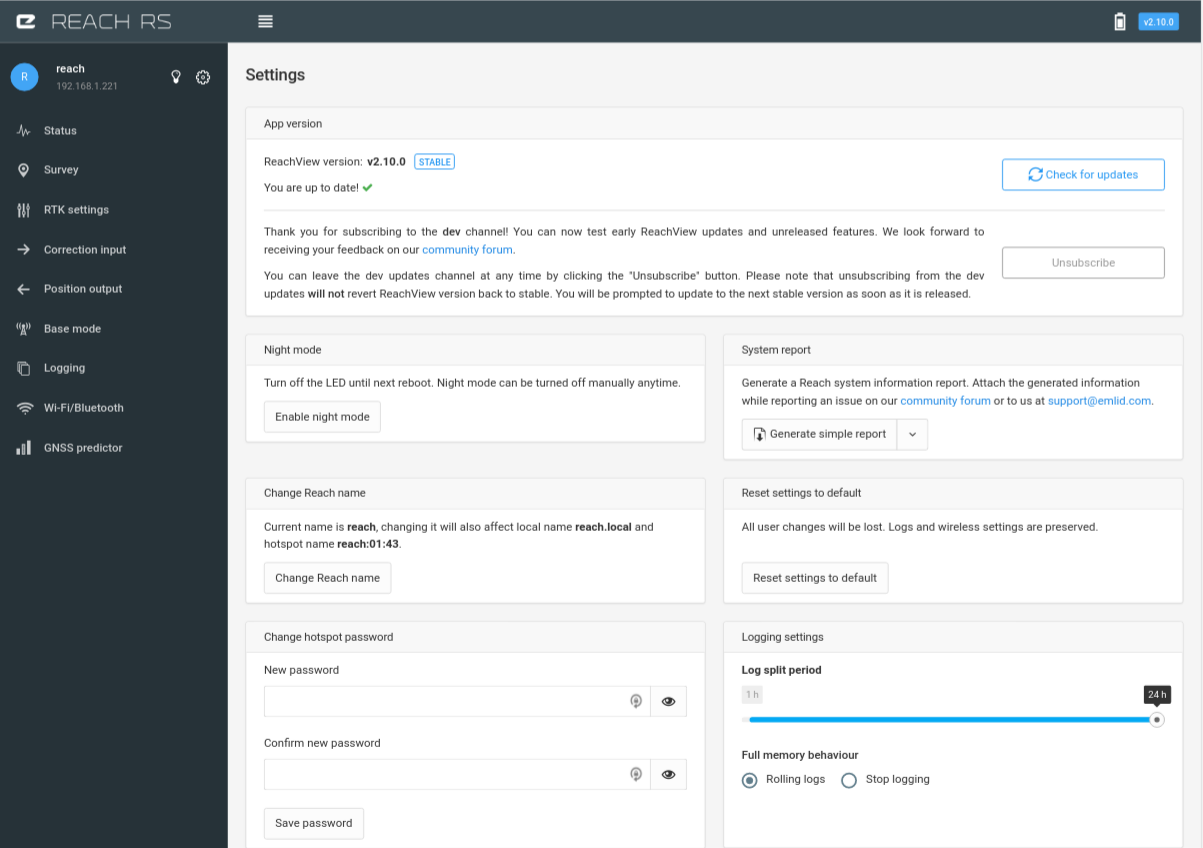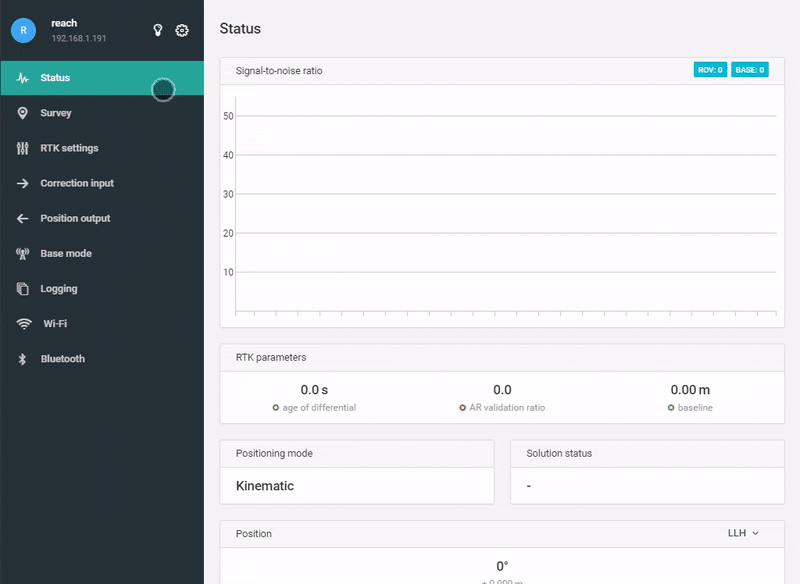Settings

Reach Panel updates#
App version#
Every time you power up Reach RS/RS+ in a Wi-Fi network, it checks for the new Reach Panel update and notifies you accordingly.
note
The update check is only done one time during the boot process. If you want to force new version check, please proceed to Updater. It is available on port 5000, for example, https://reach.local:5000. Updater automatically scans the Emlid update servers when you open it. Learn more about Updater.
System utilities#
Night mode#
Night mode allows you to turn off the LEDs until the next reboot of the device.
Bottom connector settings#
Enables automatic boot using the bottom connector on Reach RS+. Perfect for integrating the receiver with cars or tractors.
System report#
The tool is used to facilitate issue reports. There are two kinds of system reports:
- Simple system report (in plain text format)
- Full system report (in a zip archive)
The former is for the forum and makes it easy to share settings, network state, and app version. The latter is for harder cases and contains system logs and technical details of your device.
Getting system report

Reset settings to default#
Click the Reset setting to default button to return all settings to factory configuration. Only logs and wireless settings are preserved. If you would like to perform a complete factory reset and wipe all your data, you can reflash firmware image.
General settings#
Reach and hotspot name#
The Reach RS/RS+ name can be changed in order to distinguish between multiple devices. A very common pattern is to name devices according to their base or rover function. A device name is a base for hotspot name and local network name. The default name is reach, changing it will also affect local name reach.local and hotspot name reach:XX:XX.
Raw data debug#
The raw data log can be supplemented by additional data for debugging purposes. This option turns off after rebooting the device.
Logging settings#
Specify how Reach Panel will handle full memory behavior here, it can either stop logging or override old logs in favour of new ones. In most cases, Rolling logs is recommended.
Log split period#
A new log file will be created every N hours while preserving the previous log as well. This setting allows you to control the size of the files that you work with.